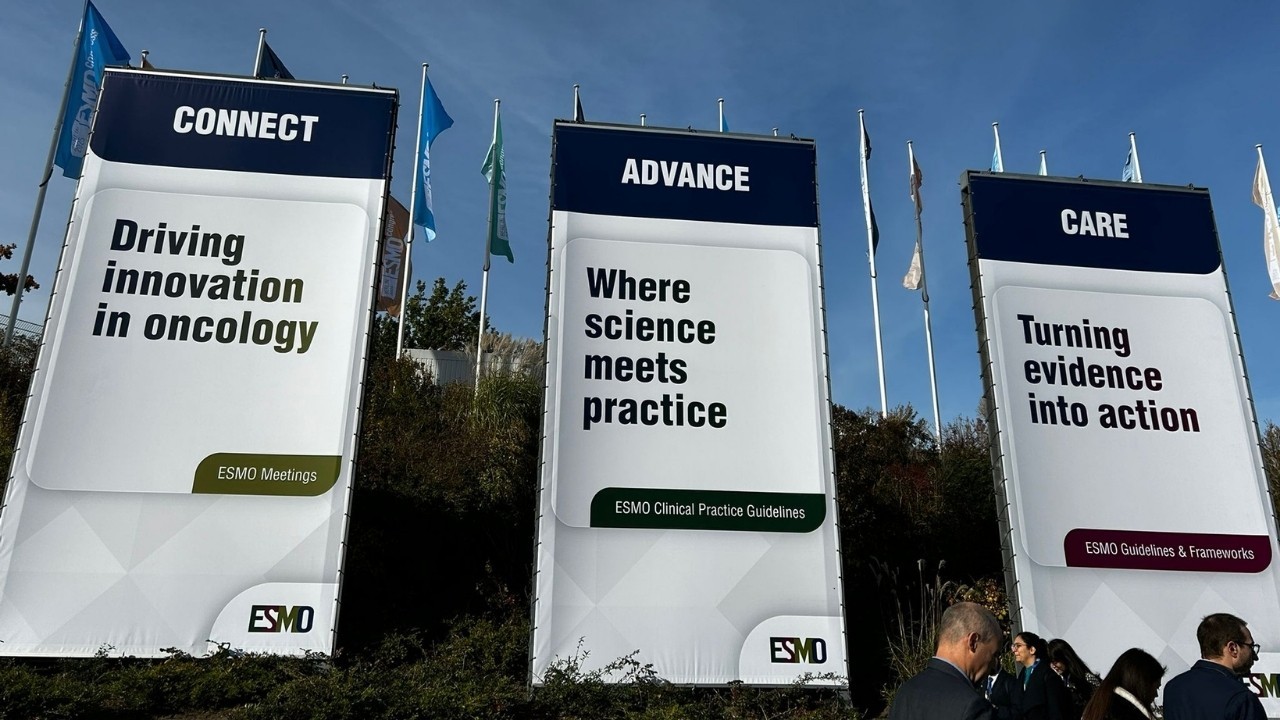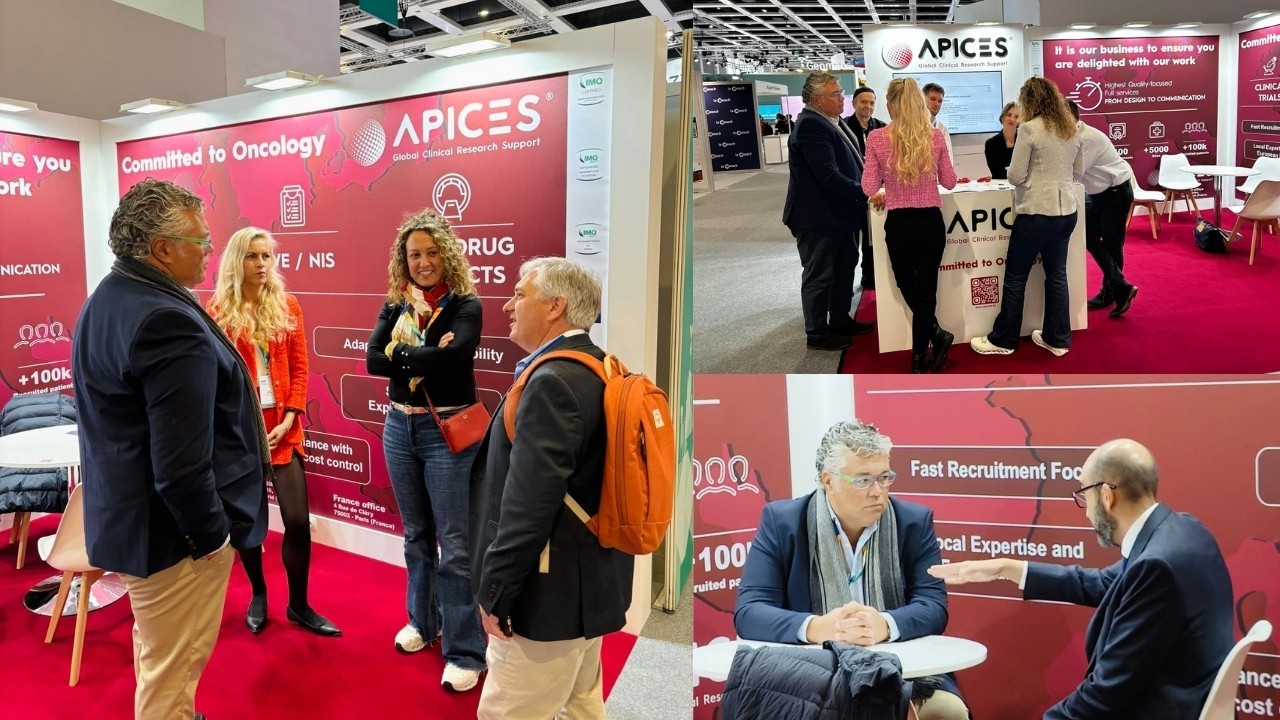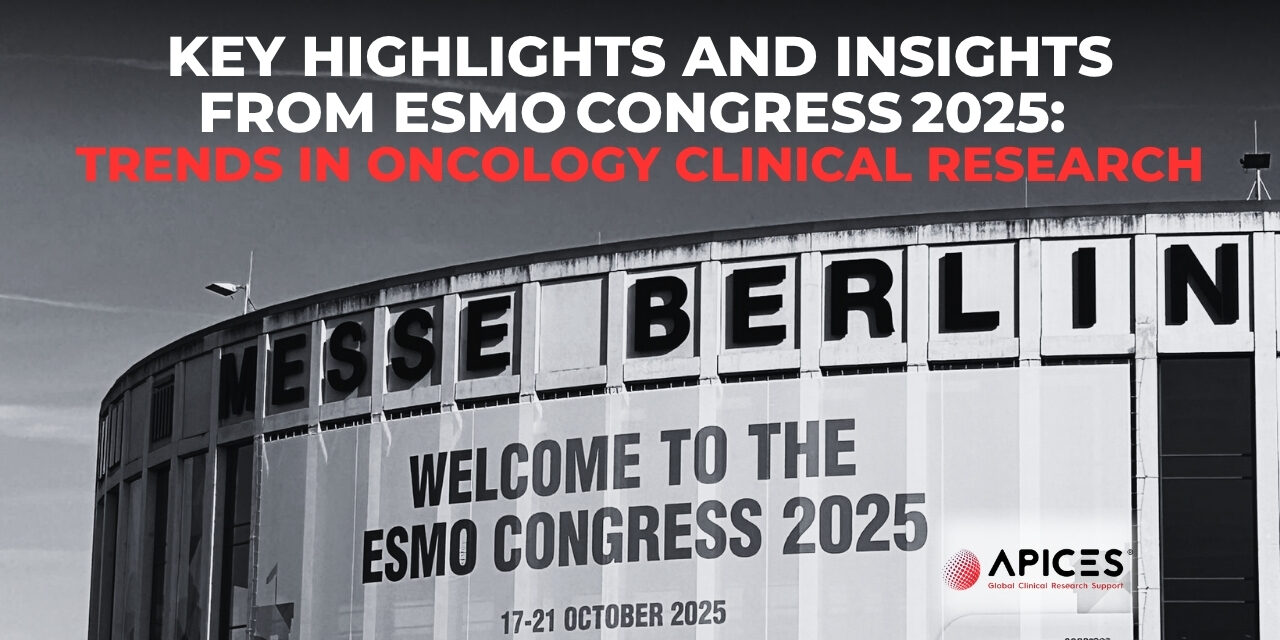Key take-aways from the ESMO – European Society for Medical Oncology Congress in Berlin, 17-21 October, 2025
The 2025 edition of the European Society for Medical Oncology (ESMO) Congress, held in Berlin from October 17-21, offered a wealth of data and signals for the evolving landscape of oncology clinical research. For executives in Pharma and Biotech focused on immuno-oncology, biomarker-driven trials, early-stage development and global expansion, the presentations underscored both scientific momentum and operational implications.

Below we review the most compelling scientific highlights, explore the overarching trends in oncology clinical development, reflect on what clients in Pharma/Biotech are signalling, and outline implications for the clinical-trial landscape.
Major Scientific Highlights at ESMO 2025
Immuno-oncology and combination strategies
One of the clear themes at ESMO 2025 was the further push of immunotherapy into new tumour types, earlier settings and combination regimens. For example, a late-breaking abstract from HARMONi‑6 evaluating the bispecific antibody ivonescimab (targeting PD-1/VEGF) plus chemotherapy versus a PD-1 inhibitor plus chemotherapy in first-line advanced squamous non-small-cell lung cancer (sq-NSCLC) was highlighted as a potentially practice-changing result. The bispecific approach reflects a broader trend of next-gen immuno-beyond classic checkpoint inhibition.
Also notable: a presentation from Agenus of a CTLA-4 + PD-1 combination (botensilimab + balstilimab) across highly-pretreated solid tumours reported ~39% 2-year survival in patients who failed prior immunotherapy and with liver metastases. This suggests tumour-agnostic potential of certain IO combinations – even in immune-resistant settings.
Targeted therapy innovations and ADCs
The congress also delivered notable targeted therapy findings, especially in lung and other solid tumours. For instance, an oral targeted agent for HER2-mutant non-small-cell lung cancer (NSCLC) demonstrated tumour shrinkage in over 70% of patients in a phase I/II trial (SOHO-01) by MD Anderson Cancer Center. Meanwhile, ADCs continue to advance: early presentation of ADC plus IO combinations in lung cancer show promising response rates (though those data pre-dated the main congress).
Early-stage settings and curative-intent trials
Another strong signal: immunotherapy and targeted agents are increasingly moving into earlier, adjuvant or peri-operative settings. In the gastrointestinal domain, the phase III MATTERHORN trial (durvalumab + FLOT versus FLOT alone in resectable gastric/GEJ adenocarcinoma) by AstraZeneca showed a statistically significant overall survival (OS) improvement (HR 0.78; p = 0.021) and event-free survival (EFS) gain (HR 0.71). This underscores the shift of immuno-oncology from palliative to curative-intent settings.
Biomarkers, rare tumours and the evolving screening challenge
On the biomarker front, ESMO experts emphasised the importance of deep molecular profiling in rare cancers, e.g., one initiative profiling over 1,100 rare-tumour specimens to drive tumour-agnostic trials. At the same time, commentary ahead of the congress noted that clinicians are still anticipating data from various biomarker-rich trials in genitourinary oncology (such as adjuvant durvalumab, lenvatinib plus everolimus, neoadjuvant immunotherapy in RCC). These signals reflect rising complexity: narrow inclusion criteria, high screening burden and competitive recruitment.
Insights from Discussions with Pharma and Biotech Clients
In the conversations with partners and clients around the congress, APICES team identified the underlying priorities and concerns of Biotech and Pharma executives. Many reflect:
Our next-gen immuno-oncology asset must show meaningful benefit in immune-cold tumour populations if we’re going to differentiate in a crowded IO market.
We’re moving our ADC into earlier-stage disease, so our trial timelines will stretch, our endpoints will shift to DFS or OS and we need site networks that can manage that.
Biomarker-driven studies are now the norm not the exception, yet we’re seeing rising screen-fail rates and longer start-up times particularly in Europe. We need partners who manage this complexity.
The funding landscape is tighter. Investors expect meaningful early data, realistic timelines and differentiated positioning. Our outsourcing and trial-execution model must reflect that risk.
Europe remains a key region, but regulatory harmonisation via CTIS/CTR is only part of the picture. Country-specific recruitment realities, contracting timelines and site capabilities vary significantly.
These voices capture the intersection of scientific ambition and operational discipline that is pervasive across oncology development today.

Emerging Trends in Oncology Clinical Research
Building on the data and client signals from ESMO 2025, several broader trends stand out:
Trend #1: Shift to earlier disease settings
As trials move from metastatic settings into adjuvant or curative-intent contexts, the operational and regulatory landscape changes significantly. Longer follow-up, larger sample sizes, more rigorous endpoints (DFS/OS) and higher cost of capital become key. The MATTERHORN OS/EFS data underscore this evolution.
Trend #2: Complexity of mechanism and combinations
The shift from monotherapy checkpoint inhibitors to bispecifics, IO/VEGF combos, ADCs + IO, and tumour-agnostic immunotherapies signals higher mechanistic complexity. This increases demands on translational science, biomarker strategy, site infrastructure (i.e., imaging, radiology, central labs) and trial management.
Trend #3: Biomarker-rich designs and recruitment challenges
Precision oncology strategies dominate. However, as inclusion becomes more selective (rare mutations, tumour-agnostic definitions, biomarker-positive subsets), the screening burden grows, as does competition for eligible patients. Delivery of timelines, screen-fail management and realistic feasibility become differentiators.
Trend #4: Rare tumour niches and tumour-agnostic approaches
While large-volume indications remain important, the rise of rare tumour and tumour-agnostic strategies (with correspondingly smaller populations and higher risk) is notable. There’s opportunity for differentiation, but also operational risk (recruitment delays, heterogeneous endpoints, regulatory novelty).
Trend #5: Funding discipline and strategic outsourcing
With longer, more complex trials and higher cost of capital, Biotech and Pharma organisations are increasingly disciplined in outsourcing and vendor selection. They seek partners that can deliver efficient start-up, tight recruitment, robust metrics, and clear timelines.
Trend #6: Europe remains strategically essential, but heterogeneous
Europe continues to offer strong investigator and site networks, but the regulatory and operational realities still differ markedly country by country. The continued rollout of the EU CTR via the CTIS (Clinical Trials Information System) provides harmonisation, yet the actual start-up timelines, ethics reviews, contracting frameworks and patient recruitment speeds remain varied.
Strategic Implications for Clinical-Trial Execution
From a clinical-development and operational perspective, the ESMO 2025 data and the trends above yield several actionable implications:
- Trial-design alignment. Ensure your indication, mechanism of action and biomarker strategy are aligned with the evolving standards. If moving into early-stage disease or rare tumours, plan for longer timelines and higher per-patient cost.
- Operational readiness. Given the complexity of combinations and biomarker selection, your clinical trial infrastructure (imaging/radiology, central labs, translational endpoints) must be fit for purpose.
- Vendor/partner selection. As clients (Pharma/Biotech) increasingly emphasise metrics (start-up time, recruitment per site, screen-fail rate), outsourcing partners need to demonstrate operational track record in complex oncology designs.
- Europe strategy. When running oncology trials in Europe, treat each country uniquely, even under harmonised frameworks like CTIS. Feasibility, local infrastructure, biomarker screening capacity and patient pools differ significantly.
- Funding and metrics discipline. With longer and more complex trials, executive teams should set realistic milestones, manage cost of capital risk and contract vendors with measurable KPIs (weeks to first patient, recruitment per site, retention rates).
- Data transparency and reporting. As late-breaking abstracts and practice-changing data influence regulatory/regimen shifts, mechanisms to monitor and adapt to emerging competition become critical.
Concluding Reflection
ESMO 2025 reaffirmed that oncology clinical research is entering a phase of greater scientific depth and greater operational complexity. While next-generation immuno-oncology, ADCs, bispecifics and biomarker-driven platforms offer genuine promise, the timeframes, design demands and trial infrastructure required are non-trivial. For Pharma and Biotech companies navigating this environment, the mantra is clear: design smart, execute precisely and partner thoughtfully. As the oncology development landscape evolves, a disciplined approach to clinical trial design, recruitment, regional execution and outsourcing will separate the high-performers from the rest.
Planning an oncology clinical trial in Europe? Let’s chat! Contact our business development team and schedule a call to know how APICES CRO handles the acceleration of study timelines and patient recruitment according to plan.
References
- European Society for Medical Oncology (ESMO). ESMO Congress 2025 – Daily Reporter Coverage (17–21 October 2025). Available at: https://dailyreporter.esmo.org. Accessed October 2025.
- The Lancet / ESMO Press Release. “HARMONi-6 Phase III study of Ivonescimab plus chemotherapy improves PFS in squamous NSCLC.” PR Newswire, 18 October 2025. https://www.prnewswire.com/news-releases/harmoni-6-phase-iii-study-of-ivonescimab-accepted-by-the-lancet-and-selected-for-esmo-2025-lba-presentation-302585824.html
- Agenus Inc. BOT/BAL (botensilimab + balstilimab) combination demonstrates 39% 2-year survival across refractory solid tumours. ESMO 2025 update, Agenus Newsroom. https://investor.agenusbio.com/news/news-details/2025/Agenus-Reports-39-of-Patients-Alive-at-Two-Years-with-BOTBAL-Across-Multiple-Refractory-Solid-Tumors-at-ESMO-2025/default.aspx
- MD Anderson Cancer Center. Oral HER2-mutant NSCLC agent shows 70% tumour-shrinkage rate (SOHO-01). Newsroom release, October 2025. https://www.mdanderson.org/newsroom/research-newsroom/esmo-2025–oral-drug-demonstrates-promising-anti-tumor-activity-.h00-159780390.html
- ESMO Targeted Anticancer Therapies Congress 2025 coverage. First-line combination of an antibody-drug conjugate plus immunotherapy shows promise in NSCLC. Daily Reporter. https://dailyreporter.esmo.org/esmo-targeted-anticancer-therapies-congress-2025/highlights-from-tat-2025/first-line-combination-of-an-antibody-drug-conjugate-plus-immunotherapy-shows-promise-in-non-small-cell-lung-cancer
- OncoDaily / AstraZeneca. MATTERHORN Trial: Durvalumab + FLOT improves OS and EFS in resectable gastric and GEJ adenocarcinoma. Published 19 October 2025. https://oncodaily.com/oncolibrary/matterhorn-trial-durva-plus-flot-esmo25
- MD Anderson Cancer Center. Five notable presentations from ESMO 2025. October 2025. https://www.mdanderson.org/cancerwise/5-notable-presentations-from-esmo-2025.h00-159780390.html
- Targeted Oncology. Most anticipated genitourinary oncology abstracts at ESMO 2025. October 2025. https://www.targetedonc.com/view/esmo-2025-poll-results-most-anticipated-gu-cancer-abstracts
- Oncology News Central. Practice-changing data expected at ESMO 2025 – What to watch for. Preview article, October 2025. https://www.oncologynewscentral.com/oncology/practice-changing-data-expected-at-esmo-2025-what-to-watch-for
- European Medicines Agency (EMA). Clinical Trials Regulation (EU No 536/2014) and the Clinical Trials Information System (CTIS). Updated 2025. https://www.ema.europa.eu/en/human-regulatory/research-development/clinical-trials-regulation




